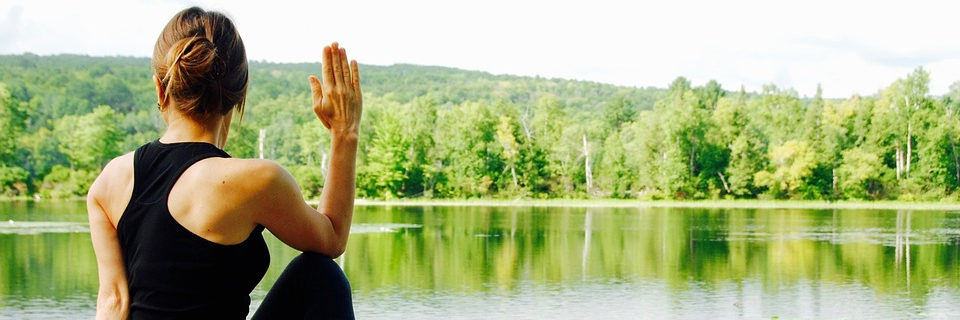Many Yoga students have difficulty with getting into and maintaining a comfortable shoulderstand (shavangasana) and plough (halasana). Often there is a feeling of heaviness, the body drops and there is compression/pain in the neck.
The major reasons for these inversions challenging Yoga practitioners lies in the upper spine, neck and tight shoulders. Most healthy adults can only flex their neck to between 70o to 80o, this forces the upper back to round even more when in plough or shoulderstand. If we add in tight shoulders that reduce the ability of the arms/hands to lift the spine, we get the classic “droopy” shoulderstand or plough.
So what can we do?
First check do you need help. Dog pose is a good “indicator” pose, so ask yourself this question, “when in dog pose is my upper back straight or obviously rounded”. A rounded upper back in dog pose suggests you need help … so read on …
First we need to prepare
Folding two or more blankets/mats or use 5 blocks creates a raised surface for the shoulders to rest on – the head should rest off the lift. If the shoulders are very tight a looped belt may help.
Entering the Pose
Lie on the lift with your shoulders supported and head off the lift, then bend your knees and set your feet against the floor with the heels close to the sitting bones. Exhale, press your arms against the floor behind you, and push your feet away from the floor, drawing your thighs into the front torso, coming into plough (halasana) or half plough (ardha halasana). Take your hands to your mid or (preferably) upper back and begin to lift the skin towards the kidney area.
Either stay in plough or continue by lifting the legs to vertical for shoulderstand. Keep the elbows shoulder width wide or less. Press the tailbone forward and thighbones backwards. Relax the face and tongue.
Stay in plough or shoulderstand for up to 3 minutes.
Exiting the Posture
To come down, exhale, bend your knees into your torso again come into halasana/half halasana for 30 seconds before rolling down OR just roll your back torso slowly and carefully onto the floor. Rest on the shoulder lift for at least 30 seconds.
Contraindications – high blood pressure, neck injury, glaucoma, menstruration, detached retina.
Cautions – diarrhoea, headaches, lower back pain, RA, balance disorders, degenerative disc disease and pregnancy.
Benefits
- Calms the brain and helps relieve stress and mild depression. Stimulate vagal tone.
- Stimulates the thyroid and prostate glands and abdominal organs
- Stretches the shoulders and neck
- Tones the legs and buttocks
- Improves digestion
- Helps relieve the symptoms of menopause
- Reduces fatigue and alleviates insomnia
- Therapeutic for asthma, infertility, and sinusitis
YOGA/PILATES EVENTS AND WORKSHOPS
If you have enjoyed our blogs you may also be interested in the events and courses we offer as day, weekend and longer Yoga and Pilates workshops in the north west and north Wales. If you are interested please click on our Yoga and Pilates Events flyer.
